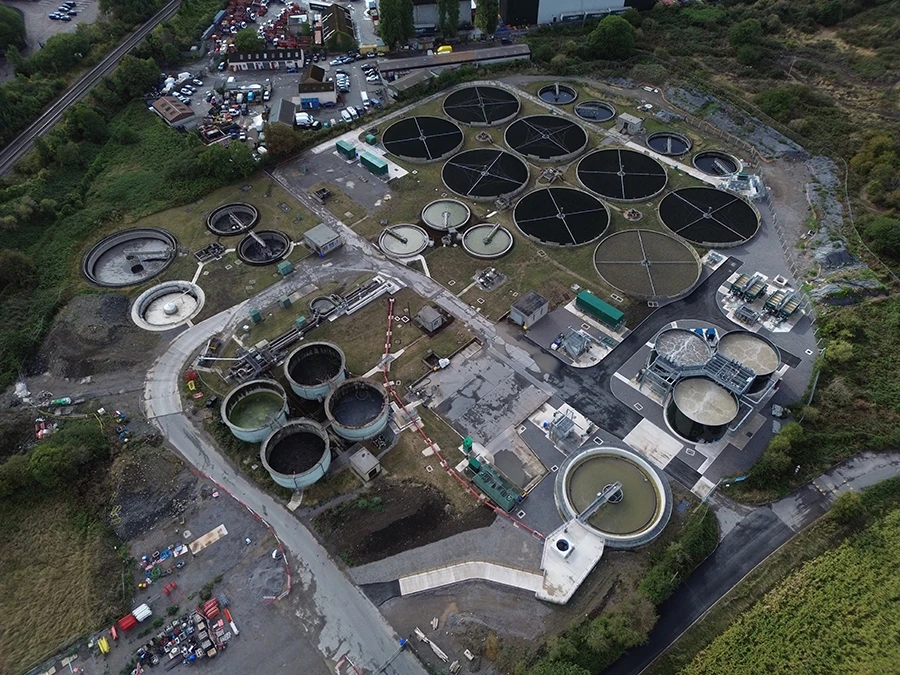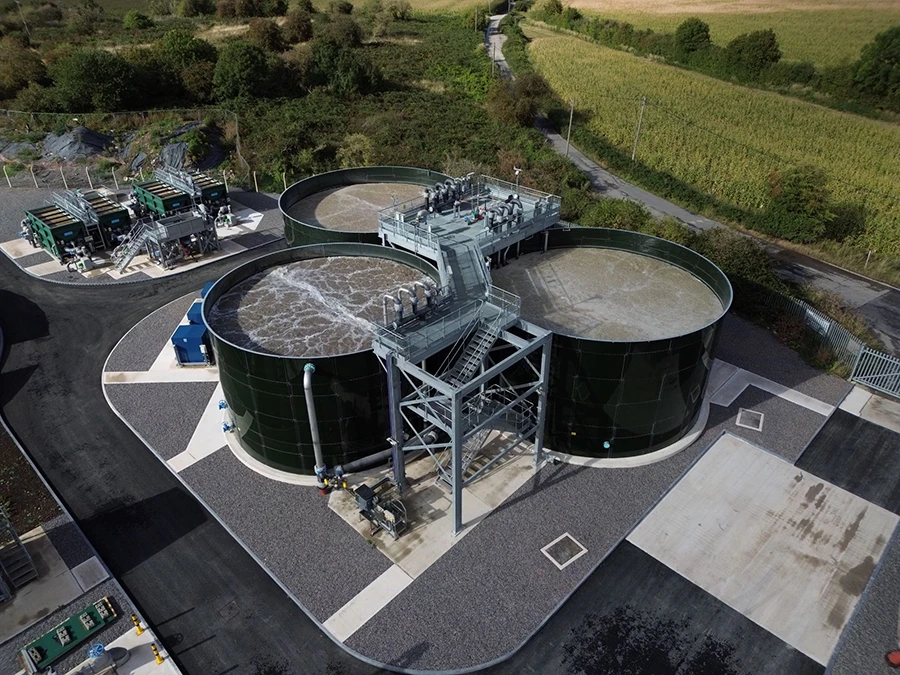- Home
- Our purpose
- Investment schemes
- Keynsham water recycling centre
Keynsham water recycling centre
How our massive investment is helping to protect the environment and meet the demands of a growing population within the Bath-Bristol corridor.
What we've done
Over two years, we carried out a £17 million upgrade of the centre at Broadmead Lane, significantly improving the ability to treat sewage from an expanding population and safeguarding nearby watercourses such as the River Avon.
Completed by our sister company YTL Construction, the project has increased the site’s treatment capacity by more than 40 per cent – enabling up to 208 litres of sewage per second to be safely processed before being returned to the environment.

Additional equipment, such as new flow measurement processes for removing phosphorous from water, which can cause harm to plants and animals in our rivers, was also added.
A 17-metre diameter primary settlement tank and upgraded power and a supply generator have also been introduced at the centre.
Meanwhile, a 15-metre diameter storm tank, capable of holding more than 300,000 litres of excess water, will also play a key role in protecting the environment by reducing discharges of diluted untreated wastewater.
Where the network is overwhelmed by the arrival of rainwater during heavy storms, the water will be held in the tank before being returned for later safe treatment and return to the environment.

How will it help?
Director of Water Recycling Ashlea Lane said: “The completion of this project reflects our commitment towards protecting the environment while supporting the growth of communities like Keynsham.
“By increasing treatment capacity and introducing new technologies to reduce pollution, we’re ensuring that this infrastructure is fit for the future, continues to meet the highest standards and is part of our wider ambition to improve water quality across the region.”
YTL Construction senior programme manager Kelvin Brick added: “This was an important project, with our team working hard to plan and install important new equipment to a confined site, ensuring the centre will be fit for purpose as Keynsham continues to grow.’’

What else are we doing?
Nearby, also alongside the River Avon, our two-year £35 million expansion of the water recycling centre at Saltford, which will boost the capacity of the Mead Lane site to treat sewage from the city of Bath and the surrounding area, is due to finish in early 2026.
We’re also ensuring that we can meet the challenge of the expanding population in Bristol, with more than £100 million being invested to extend the water recycling centre in Avonmouth, which serves the city.
Meanwhile, Wessex Water’s ambitious 2025-30 Business Plan proposes more than doubling its monthly spend on tackling storm overflows – from £3 million to £8.5 million a month (£580 million over five years).
A further £820 million is being proposed to improve river and coastal water quality, including removing more phosphorus, ammonia and nitrogen from wastewater – nutrients that can harm aquatic ecosystems by promoting excessive algae growth and depleting oxygen levels.
The company is also continuing to lead the industry in transparency, being the first UK water company to publish storm overflow data daily for bathing waters and recreational areas.
This information, shared with local councils and environmental groups such as Surfers Against Sewage, is available via our coast and rivers watch.
